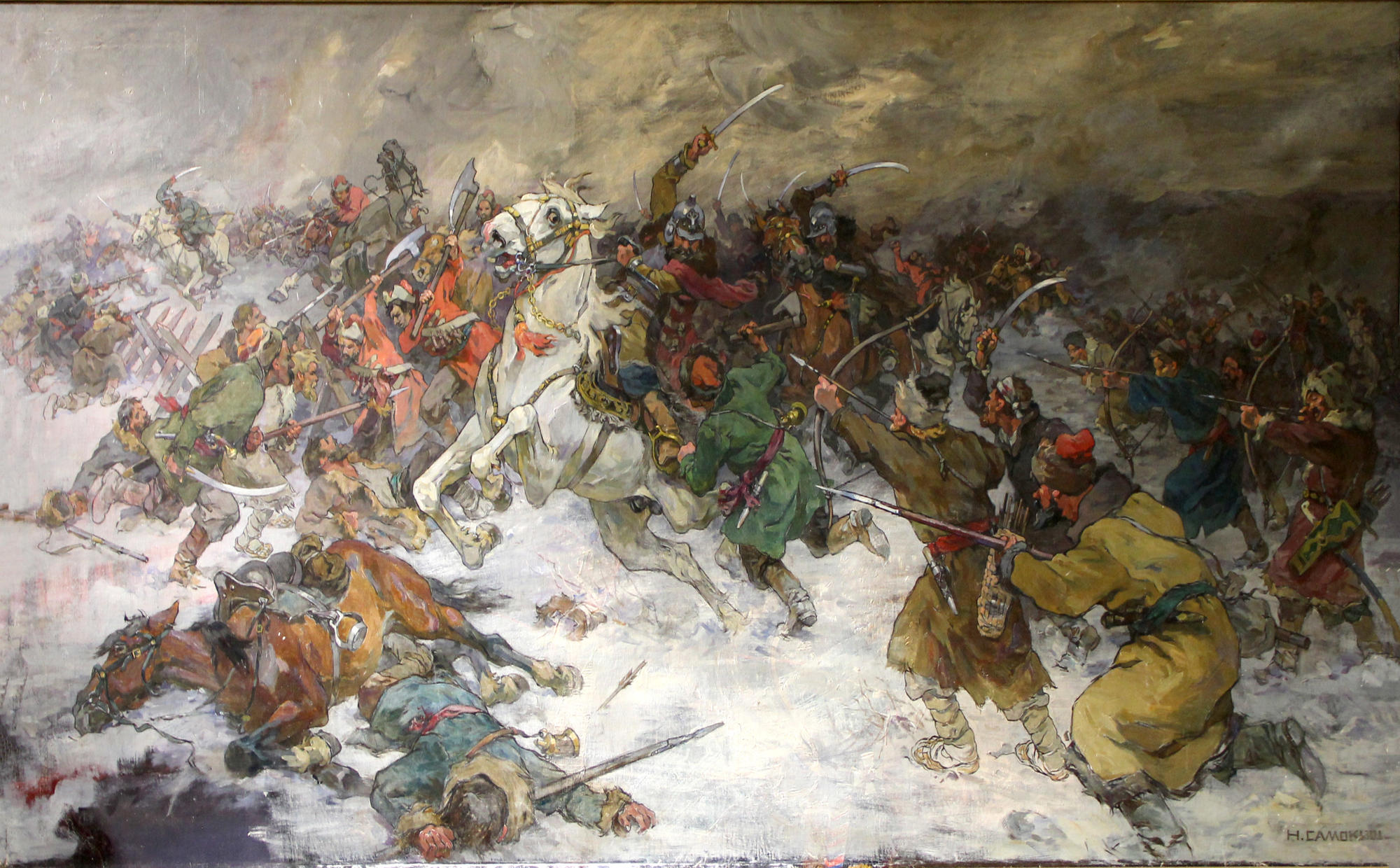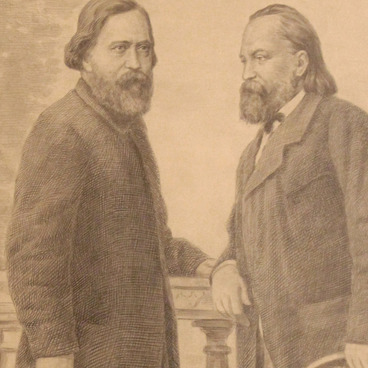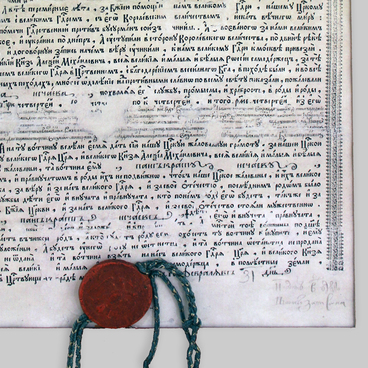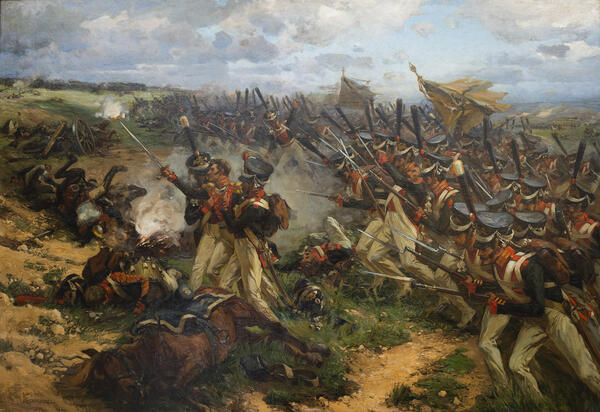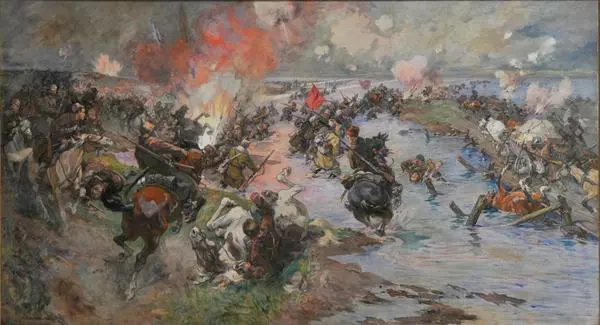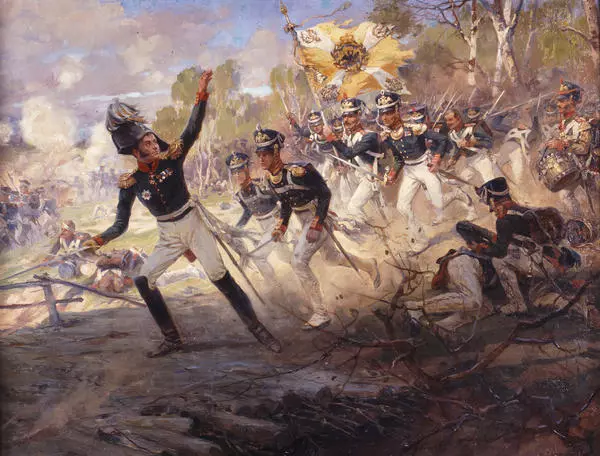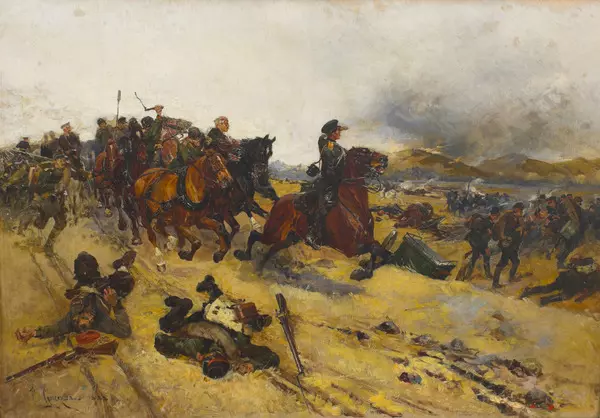Nikolay Semyonovich Samokish (25 October 1860, Nezhin, Government of Chernigov, Russian Empire - 18 January 1944, Simferopol) was a Russian and Soviet painter of battle scenes and a pedagogue, who also worked in the sphere of an animalistic genre and book graphics. Academician and a full-fledged member of the Imperial Academy of Arts, Honoured Art Worker of the RSFSR, Laureate of Stalin Prize of 2nd degree.
Nikolay Samokish depicted one of the battles of the Peasant War (1670-1671), many events of which took place on the territory of today’s Mordovia. The battle between the rebels and the government troops was near Kandarat village. The painting was commissioned by the Museum of Local History of Mordovia and bought from the artist in 1937.
The winter and the summer of 1670 were marked by the victories of the rebels under the leadership of Stepan Razin. Having captured Astrakhan and Tsaritsyn, the rebellious troops moved to the Middle Volga region. The rebels were fortunate. Saratov and Samara had been captured by September and the siege of Simbirsk started.
Nikolay Samokish depicted one of the battles of the Peasant War (1670-1671), many events of which took place on the territory of today’s Mordovia. The battle between the rebels and the government troops was near Kandarat village. The painting was commissioned by the Museum of Local History of Mordovia and bought from the artist in 1937.
The winter and the summer of 1670 were marked by the victories of the rebels under the leadership of Stepan Razin. Having captured Astrakhan and Tsaritsyn, the rebellious troops moved to the Middle Volga region. The rebels were fortunate. Saratov and Samara had been captured by September and the siege of Simbirsk started.
Stepan Razin managed to capture Posad forcing the Governor with the garrison to lock up in the Simbirsk Kremlin. Because of the fact that the rebellious army was constantly replenished with runaway peasants, soon its number reached 20000 people. Having consolidated in Posad, Razin started sending troops for capturing nearby cities.
The squad of Ataman Michael Kharitonov made its way along the defence line to Saransk. On the 18 th of September they already captured the suburb of Saransk - Atemar fortress, and the following day Saransk itself. The city was assaulted three times. The rebels burnt mansions, didn’t have mercy on landlords and officials. They captured quite a lot of cannons in Inzersk stockade town and in Atemar.
At the beginning of November one of the leaders of the rebellion, Mordovian Mirza Akai Bolyaev led his squad to Alatyr. Though a little bit earlier regimental governor of province, Prince Yury Baryatinsky had soundly defeated Razin in the battle of Simbirsk, Stepan Timofeyevich himself was seriously wounded. Now the governor of province had a free hand.
Not to leave Alatyr city to the rebels, Baryatinsky came out to intercept Bolyaev’s squad. There still exists the report of the prince to Moscow that near Kandarat village of Alatyr district fifteen thousand peasants gathered. The rebels erected fortifications on the left bank of the Kandarat River, on the 6th of November the governor of province tried to force an action.
The decisive battle happened on the 12th of November, when Baryatinsky troops reached the left bank of the river. The rebels suffered a crushing defeat, lots were killed, others scattered in panic or according to the words of a contemporary " ran away in different directions’. The prince captured 323 captives, 24 banners and 12 cannons.
By fire and sword, the tsar’s governor of province mastered Saransk district. On the 18th of December, after Saransk had been taken by the government troops, Baryatinsky proceeded with chasing Akai Bolyaev. Mirza, who had taken part in the defence of Saransk, had an intention to hide in his own village called Kostyashevo, 30 versts away from the city. But in two days Bolyaev was captured.
In January 1671 the chief governor of province Yury Dolgorukov sentenced the rebellious Mirza to quartering. The execution took place in Krasnoslobodsk. The destiny of M.Kharitonov isn’t known exactly. Having suffered the defeat from Baryatinsky, in the middle of December 1670, the Ataman with his squad of about 100 people retreated to Penza. Historians believe that Kharitonov was captured near Arzamas and then executed on the order of the governor of province Dolgorukov. That’s how the rebellion in Saransk district came to its end.
The squad of Ataman Michael Kharitonov made its way along the defence line to Saransk. On the 18 th of September they already captured the suburb of Saransk - Atemar fortress, and the following day Saransk itself. The city was assaulted three times. The rebels burnt mansions, didn’t have mercy on landlords and officials. They captured quite a lot of cannons in Inzersk stockade town and in Atemar.
Kharitonov crossed the whole Mordovian Territory with battles and a considerable part of the lands between the Sura and the Volga found themselves under his rule. Everywhere the Ataman ordered to free convicts in the stocks (so the prisoners were called in ancient times) and set the rules which nowadays we might call a rule of people. Tatars, Maris, Mordva joined the ranks of the rebels. Kharitonov’s squad turned into many thousands' army.
At the beginning of November one of the leaders of the rebellion, Mordovian Mirza Akai Bolyaev led his squad to Alatyr. Though a little bit earlier regimental governor of province, Prince Yury Baryatinsky had soundly defeated Razin in the battle of Simbirsk, Stepan Timofeyevich himself was seriously wounded. Now the governor of province had a free hand.
Not to leave Alatyr city to the rebels, Baryatinsky came out to intercept Bolyaev’s squad. There still exists the report of the prince to Moscow that near Kandarat village of Alatyr district fifteen thousand peasants gathered. The rebels erected fortifications on the left bank of the Kandarat River, on the 6th of November the governor of province tried to force an action.
The decisive battle happened on the 12th of November, when Baryatinsky troops reached the left bank of the river. The rebels suffered a crushing defeat, lots were killed, others scattered in panic or according to the words of a contemporary " ran away in different directions’. The prince captured 323 captives, 24 banners and 12 cannons.
By fire and sword, the tsar’s governor of province mastered Saransk district. On the 18th of December, after Saransk had been taken by the government troops, Baryatinsky proceeded with chasing Akai Bolyaev. Mirza, who had taken part in the defence of Saransk, had an intention to hide in his own village called Kostyashevo, 30 versts away from the city. But in two days Bolyaev was captured.
In January 1671 the chief governor of province Yury Dolgorukov sentenced the rebellious Mirza to quartering. The execution took place in Krasnoslobodsk. The destiny of M.Kharitonov isn’t known exactly. Having suffered the defeat from Baryatinsky, in the middle of December 1670, the Ataman with his squad of about 100 people retreated to Penza. Historians believe that Kharitonov was captured near Arzamas and then executed on the order of the governor of province Dolgorukov. That’s how the rebellion in Saransk district came to its end.
